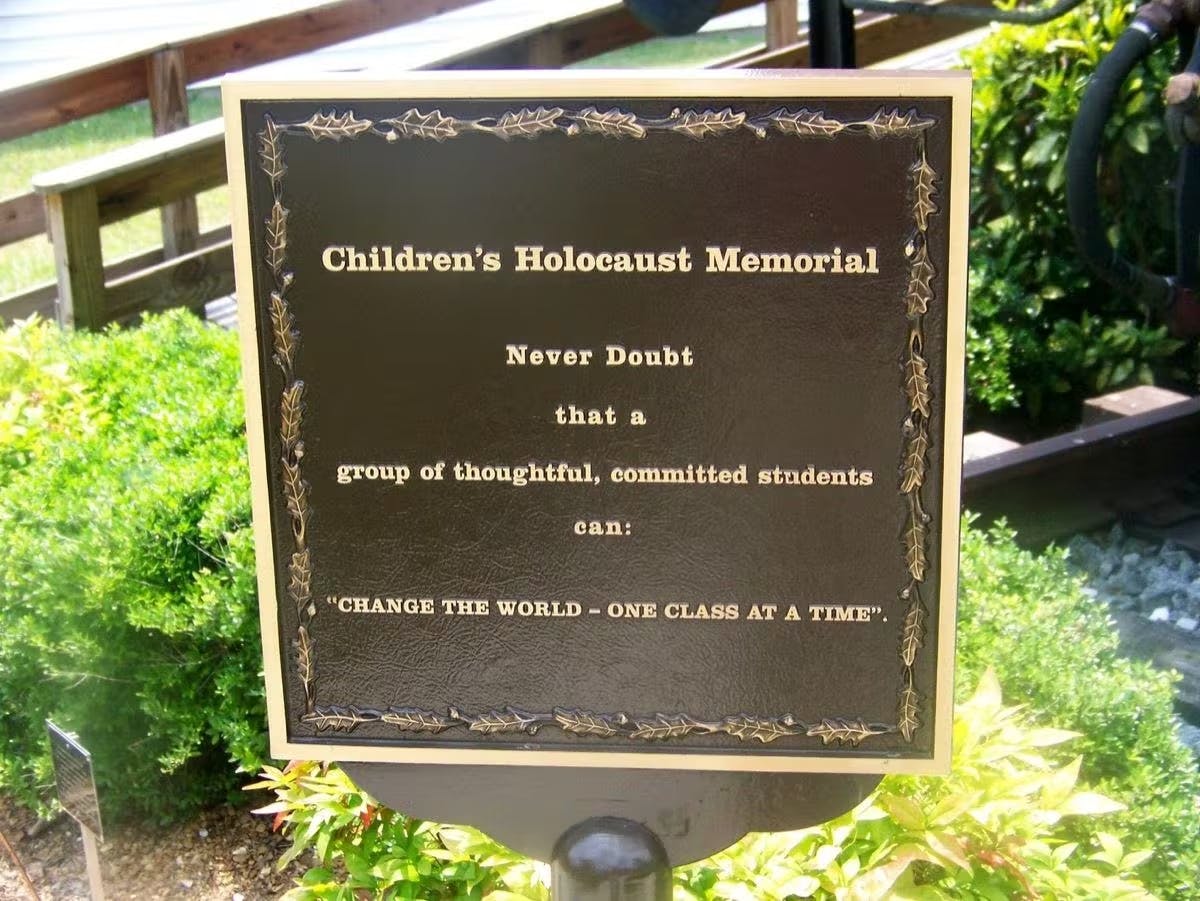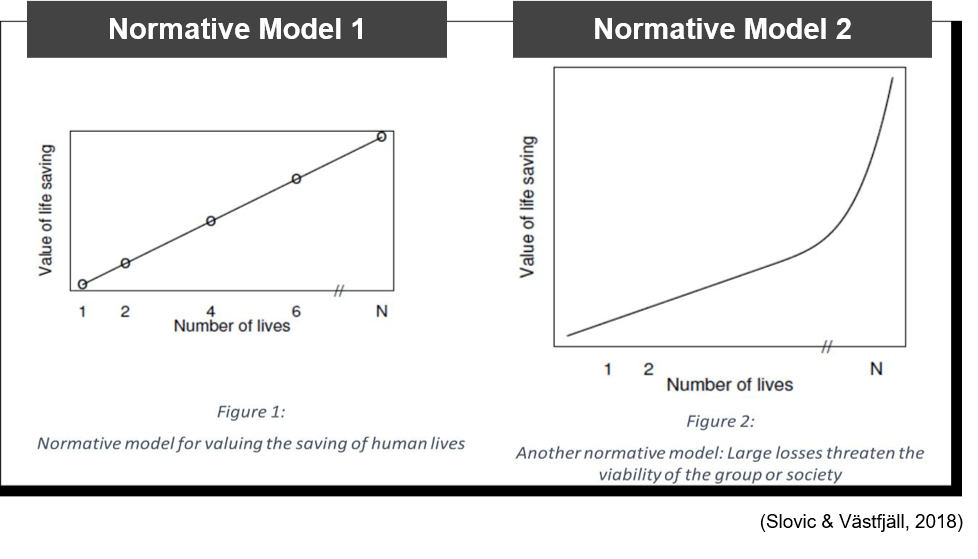Why We’re Numb to the Toll of COVID
“There were not six million Jews murdered: there was one murder, six million times.”
- Abel Hertzberg, Holocaust survivor [1]
The year was 1998. The tiny town of Whitwell, Tennessee, with less than 2,000 residents, was about to become known for something no one had ever expected.
It all started when Linda Hooper, the principal of the Whitwell Middle School, wanted to give the students of this largely white and Christian town a broader world view. She asked the language arts teacher, Sandra Roberts, and the associate principal, David Smith, to start an after-school program on Holocaust education, a topic that wasn’t yet part of the school’s curriculum.2
So they went about explaining to their students the horrors of the Holocaust, readings books such as Anne Frank’s The Diary of a Young Girl (1947) and Elie Wiesel’s Night (1956). Eventually, they touched on the massive number of lives lost during this time. But when the teachers stated that 6 million Jewish people had died in the Holocaust, a young student remarked, “What is 6 million? I have never seen 6 million.”
The teachers realized this was a valid concern. How could they help students understand something on such a large scale? They soon came up with the idea of collecting 6 million objects, in order to visualize the deaths. Through research, the students learned that Norwegians had worn paperclips on their clothing during World War II as a silent protest against Nazi atrocities.
And so began the famous Paperclip Project: a quest to collect 6 million paperclips.
At first, it was just the students, looking for paperclips everywhere they could find. Then they expanded the search. They set up a website, they wrote to people, and they spread the word. Gradually, paperclips started trickling in from around the world. From Holocaust survivors to celebrities such as Bill Clinton and Tom Hanks, everyone started sending in paperclips. Some came with little notes, featuring dedications, names, and stories of family members who had lost their lives to the atrocity. One letter read, “Today, I am sending 71 paperclips to commemorate the 71 Jews who were deported from Bueckeburg.”3
Over the next few years, more than 30 million paperclips were collected. The school then converted this into an exhibition. They acquired a German cattle car that had been used to transport people to concentration camps, and filled it with 11 million clips: 6 million to represent the Jewish lives lost, and 5 million to represent victims from other persecuted groups.
It still exists today as the Children’s Holocaust Memorial.
Behavioral Science, Democratized
We make 35,000 decisions each day, often in environments that aren’t conducive to making sound choices.
At TDL, we work with organizations in the public and private sectors—from new startups, to governments, to established players like the Gates Foundation—to debias decision-making and create better outcomes for everyone.

Why COVID-19 is a reminder about the value of life
The somber story above is important because we are once again on the verge of losing sight of the value of life. We, like that young student whose comment kicked off the Paperclip Project, are now grappling with the weight of millions of deaths.
When COVID-19 first emerged, the number of deaths caused by the virus impacted us immensely. Across the world, we all refreshed our news feeds obsessively to keep track. We were all scared when the number hit 1,000 deaths. After 10,000 deaths, we got more scared. But as we marched towards 100,000 deaths, we somehow cared less than before. Now, with more than two million deaths caused by COVID-19 globally, we are going about our daily lives as if nothing happened.
This becomes even scarier if we take young people into account. Imagine growing up thinking that losing two million people in less than a year is just normal news. For many, the inconvenience of online learning may stand out more in their memories than the toll of the coronavirus.
Why do large numbers of deaths make us feel so numb? Why do we care less when many people die, compared to when we lose just one person?
The value of life, and how we perceive it
I had first read about Paul Slovic and Daniel Västfjäll’s work on this topic when I was doing my Master’s dissertation on a similar subject. I remember reading about examples of mass death, from the Holocaust to the Syrian War. It never occurred to me for a moment that I would live through something comparable.
Slovic and Västfjäll’s groundbreaking work teaches us a lot about how we value life.5 To put it simply, in an ideal world, every life is equal and holds the same value. So if, say, you were to donate money to save lives, where the number of victims is N and X is the dollar amount it takes to save one person, then the total response that should be expected, R would be quantifiable as R = X times N. This gives us a linear graph, as seen below on the left.
The second form of normative value of life is when the number of lives crosses a threshold, beyond which the sustainability of the group is threatened, and as a result, every additional life saved is perceived to have much more value. For example, when an animal is on the verge of extinction, every animal of that species becomes more “valuable.”
Both of these ideal forms of valuing life can be depicted as below:

As I said, all of this is in an ideal world. But we don’t live in an ideal world—and the way we actually respond is very different. Experimental evidence is clear that we do not feel more moved by larger groups, regardless of the group in question.
In one study, Slovic and Västfjäll show that increasing the number of victims in a donation appeal drastically decreases donations.7 Similarly, Small, Loewenstein, & Slovic showed that a single identifiable victim gets more donations than a larger statistic.8
Even when we’re given information about the people who make up larger groups, it doesn’t make a difference: Kogut & Ritov showed that a single identifiable victim still gets more donations than a group of identifiable victims.9
Two models have been put forward to explain this decrease in empathy. The first is the psychological model, where our compassion initially increases with the number of victims, but then hits a plateau. Imagine if I told you 6 million Jews died in the Holocaust, and then corrected myself to say, actually, it was 6,000,653 people who died. Those 653 additional deaths do not make you feel any worse.
The second model is even scarier. This model, called the collapse of compassion, tells a different story: it says that our compassion drops progressively as we add more victims, even as we move from 1 victim to 2. According to this model, as we move further away from a single victim, our compassion continually drops until it hits zero.
These 2 models are represented below:6

So far, it’s not clear which of these models is correct. But no matter what angle we take, unfortunately, we hit the same problem—that we are not capable of feeling compassionate for large numbers of people.
Why we feel numb, and what to do about it
There are several possible explanations for this. Maybe people doubt the efficacy of their actions when the number of victims is large: If 100,000 children are in need of help, what good will my $10 donation do? Or perhaps people regulate their feelings so as not to feel compassionate when they know a donation has to be made because, at the end of the day, we are selfish, and no one wants to part with their money. Or maybe we feel psychologically distant from large numbers in general; they are abstractions to us, rather than concrete concepts.
Charity is one thing—but now, it’s about how we go about our day-to-day lives. At this point in the pandemic, these large numbers are being thrown around in conversation like any other news item, and we are reacting to them in an equanimous manner, as if it does not affect us. But they do affect us—and we all have a role to play in containing the virus.
Visualization: A possible solution
All is not lost, though. The children of the Whitwell Middle School taught us an important lesson: The ability to visualize large numbers is what is missing, and if we can find innovative ways to do that, we might still be able to salvage some of this compassion. And we have seen this happen.
In May 2020, The New York Times dedicated the front page of the newspaper to names of 100,000 Americans who had (at that point) died in the pandemic. Each name was followed by a line from the obituary. It was meant as a reminder to people that behind the statistics are the lives of real people, with families. They were a part of someone’s memories and they deserved to be remembered for who they were, and not merely as a number.10
Another stark representation of this loss came in October 2020, when 20,000 empty chairs were laid out at the grounds facing the White House. Each chair represented 10 deaths. This was then followed by similar installations in various states across the U.S.11
Final takeaways
In order to counter these effects, there are things we can do. Visualization is one of them. The other is to tell people about the importance of small efforts. Technology, especially, helps us do this through features such as real-time updates about donations. Many crowdfunding websites allow donors to track projects long after they have contributed to them, in order to see the impact of their actions. This could be one way to tell people that every bit matters.
Whether this helps change how we value life might still be a question for researchers, but in the current context, it might just help us understand and assimilate large numbers. This in itself is a move in the right direction. The least we can do at this point is ensure our children don’t grow up thinking that it’s normal to lose millions of lives to a virus within a single year. We owe them that much.
References
- https://www.ushmm.org/online-calendar/event/mchcrltcol1118
- https://www.artsy.net/article/artsy-editorial-middle-school-class-created-world-renowned-holocaust-memorial#:~:text=I’ve%20never%20seen%206,quiet%20protest%20during%20the%20war.
- https://www.edweek.org/leadership/schools-paper-clip-project-attracts-worldwide-attention/2001/05
https://alchetron.com/Paper-Clips-Project
Slovic, P. (2010). If I Look at the Mass I Will Never Act: Psychic NumbingPsychic Numbing and GenocideGenocide, 2(2), 37–59. https://doi.org/10.1007/978-90-481-8647-1_3 - Slovic, P., & Västfjäll, D. (2018). The More Who Die, the Less We Care Psychic Numbing and Genocide31, 94–114.
- Västfjäll, D., Slovic, P., Mayorga, M., & Peters, E. (2014). Compassion fade: Affect and charity are greatest for a single child in need. PloS one, 9(6), e100115.
- Small, D. A., Loewenstein, G., & Slovic, P. (2013). Sympathy and callousness:The impact of deliberative thought on donations to identifiable and statistical victims. The Feeling of Risk: New Perspectives on Risk Perception, 102, 51–68. https://doi.org/10.4324/9781849776677
- Kogut, T., & Ritov, I. (2005). The “ Identifiable Victim ” effect : an identified group , or just a single individual ? J Behav Decis Mak, 18(August), 157–167. https://doi.org/10.1002/bdm.492
- https://www.nytimes.com/2020/05/23/reader-center/coronavirus-new-york-times-front-page.html
- https://www.pbs.org/newshour/arts/how-communities-across-the-country-are-honoring-covid-victims
About the Author
Preeti Kotamarthi
Preeti Kotamarthi is the Behavioral Science Lead at Grab, the leading ride-hailing and mobile payments app in South East Asia. She has set up the behavioral practice at the company, helping product and design teams understand customer behavior and build better products. She completed her Masters in Behavioral Science from the London School of Economics and her MBA in Marketing from FMS Delhi. With more than 6 years of experience in the consumer products space, she has worked in a range of functions, from strategy and marketing to consulting for startups, including co-founding a startup in the rural space in India. Her main interest lies in popularizing behavioral design and making it a part of the product conceptualization process.





